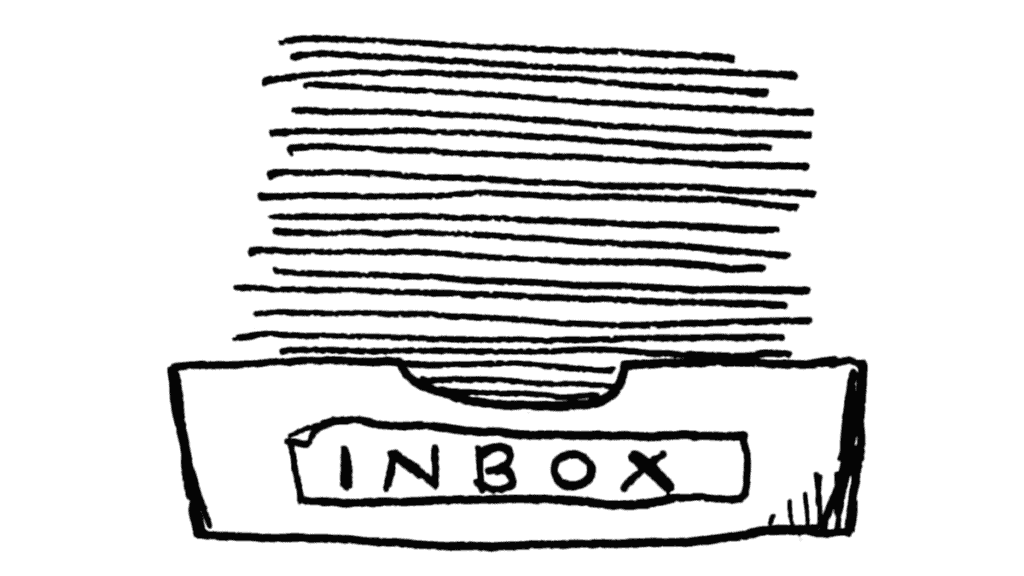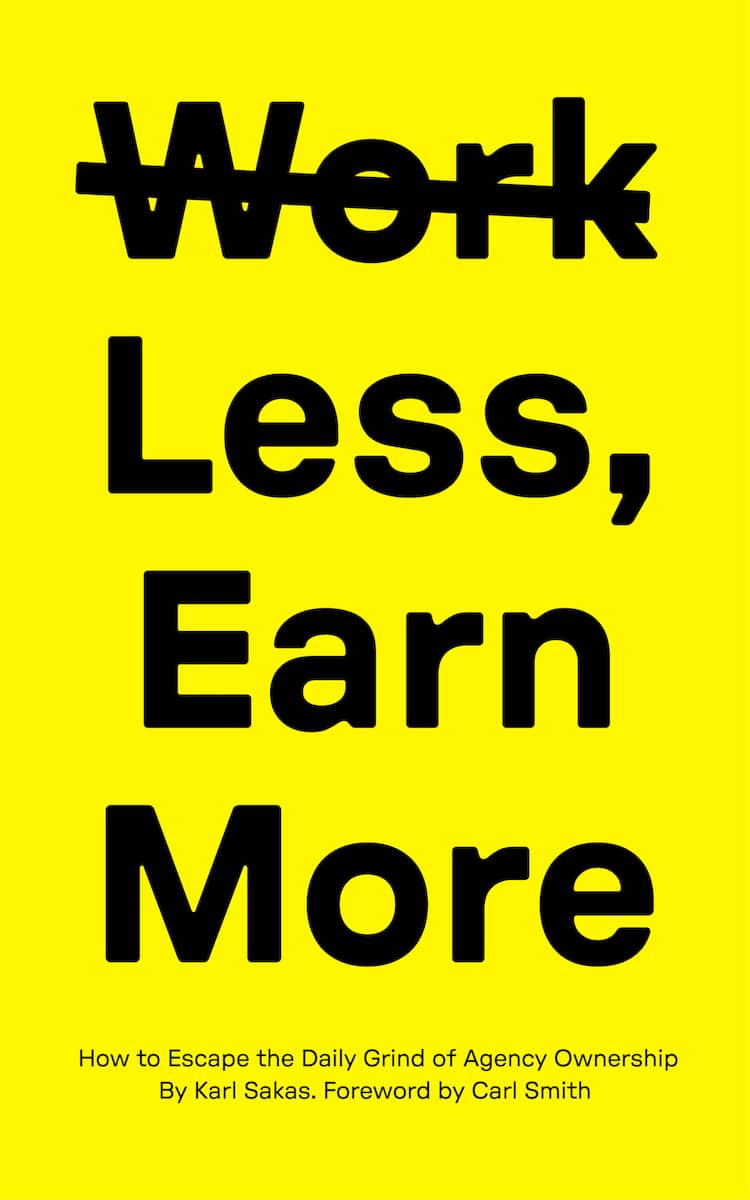If it feels like you’re drowning in administrative work while running your digital agency, you’re not alone.
Business Insider shared some fascinating data about the flood of meetings, emails, and metrics—especially as it affects company managers.
How does your day compare to the norm? Let’s see what’s normal, and then let’s look at my advice on how to get better results in less time.
What’s “normal” for meetings, emails, and metrics for managers?
Meetings are a natural part of life for a manager—they are part of your job. But they can get out of hand:
“Bain & Company, another consulting firm, studied a sample of big firms, finding that their managers spent 15% of their time in meetings, a share that has risen every year since 2008. Many of these meetings have no clear purpose. The higher up you go, the worse it is. Senior executives spend two full days a week in meetings with three or more colleagues.”
Emails and other external communications have exploded 30X in the past 45 years—from four a day in 1970 to 120 a day now:
“Bain estimates that the number of external communications that managers receive has increased from about 1,000 a year in 1970 to around 30,000 today. Every message imposes a ‘time tax’ on the people at either end of it; and these taxes can spiral out of control unless they are managed.”
Likewise, Key Performance Indicators (KPIs) have grown dramatically—from an average of 4-7 metrics in 1955 to 25-40 “performance imperatives” today:
“There has been an explosion of ‘performance imperatives’: in 1955 firms typically embraced between four and seven of them; today, as they strain themselves to be kind to the environment, respectful of diversity, decent to their suppliers and the like, it is 25-40.”
To be sure, Bain primarily works with large companies—ones that are likely larger than your agency. But in my experience, the data reflect what many of my clients face—too many meetings, too many emails, and too many things to worry about.
Trying to find more free time as a manager? Focus.
You can’t (and shouldn’t) eliminate all meetings, emails, and performance metrics—but you can reboot the entire process to take control of your life. Let’s look at how to fix each problem.
#1: How to fix the meeting problem
You shouldn’t be going to every meeting on your current schedule. Just say “no.”
Do a calendar review of your current schedule, and identify things you can Drop, Delegate, or Defer. When I guide my clients through doing this, they can typically eliminate between two and 10 hours a week.
When an employee invites you to a meeting, think about whether it’s necessary. Meetings should be for 1) making decisions that require real-time discussions, and 2) brainstorming when asynchronous methods aren’t sufficient. Consider creating internal Office Hours.
When clients invite you to meetings, think about whether the meeting is the best approach. Sometimes an in-person meeting is important for the relationship, but a phone call is often a better, faster solution. And if you’re always in client meetings (and don’t want that), it’s time to redefine your job. (And be sure the meeting leader is doing these three things.)
Before you set up your own meetings, think about whether it’s the best way to get things done. If it’s a status update, send a memo. (But not too many memos—people will start ignoring your missives.)
How to handle external meetings
- Cancel it altogether, if you decide it’s unnecessary.
- Defer it to a future date, if it’s not urgent/important this week.
- Send someone else.
- Go yourself as planned.
- Go yourself, but switch from off-site to a phone (or video) meeting (and tell them you need to keep it to X minutes instead of the original length).
How to handle internal meetings
- Tell the meeting organizer you’ll need an agenda before each meeting at least a day in advance.
- If it’s a status update (and doesn’t require a decision or other input from you), tell them you’ll skip and ask them to send a recap afterwards.
- If you do need to be there, but not for the entire time, ask them to put your item at the beginning or the end, so you don’t need to attend the entire meeting.
- If you’re the organizer and it’s a recurring meeting, can you put someone else in charge? Or might these be just as effective if you met less often?
#2: How to fix the “too many emails” problem
My clients report getting too many emails—from team members and from outside people like clients and (to a lesser extent) vendors. It makes it hard to keep up.
Consider shifting client communications to a web-based system like Teamwork or ZenDesk. Their dashboard-based approach lets you filter you email inbox to focus on what’s truly most important. But be careful about negative impacts to Warmth & Competence.
To reduce internal email volume, you can also use systems like Slack. You can even include clients, too, although Slack may require more onboarding if they haven’t used it before—and you may not want clients to have that instant access to your team.
Several of my clients have had internal discussions on communications—the teams decided what types of communications should happen via which channel (e.g., in-person or phone was top-priority, instant messaging was less urgent, and emails were least urgent), which made it easier to focus on what was truly important.
#3: How to fix the “too many metrics” problem
If you focus on just three Key Performance Indicators (KPIs), I recommend these three metrics—I call them the 3 Golden Agency Metrics:
- Billable Ratio — What percentage of total agency time are you billing to clients?
- Sales Backlog — How many months of work have you booked (the contract’s signed) but not yet started?
- Employee Turnover — What percentage of your employees leave voluntarily each year?
Why those three? Those “vital signs” quickly reflect what’s working—they’re top indicators for agency health.
Other things are important, too—employee satisfaction, referrals by clients, client turnover, cash reserves, profit margin, and so on. But if you want to focus, start with those three—they encapsulate almost everything else. Read more about the 3 Golden Agency Metrics here.
Finding more free time at your digital marketing agency
Start by doing a calendar review—how many hours can you cut from your schedule next week? Can you eliminate more than the range I typically see (between two and 10 hours a week)?
Next, review your emails and other inbound communications. A client recently started coding his emails by whether they were about Revenue or NonRevenue. As he focused on just the revenue-driving emails, he reduced the non-revenue emails from 60-75% to just 10-20%.
Finally, make a list of your current KPIs and why you track those metrics. Think about whether they make sense (individually and together). If you track something but never act on it… you should stop tracking it. If you aren’t tracking any KPIs, you should start—start with the 3 Golden Agency Metrics I’ve listed above (Billable Ratio, Sales Backlog, and Employee Turnover).
Question: How much time do you think you’ll save this year by implementing this advice?


